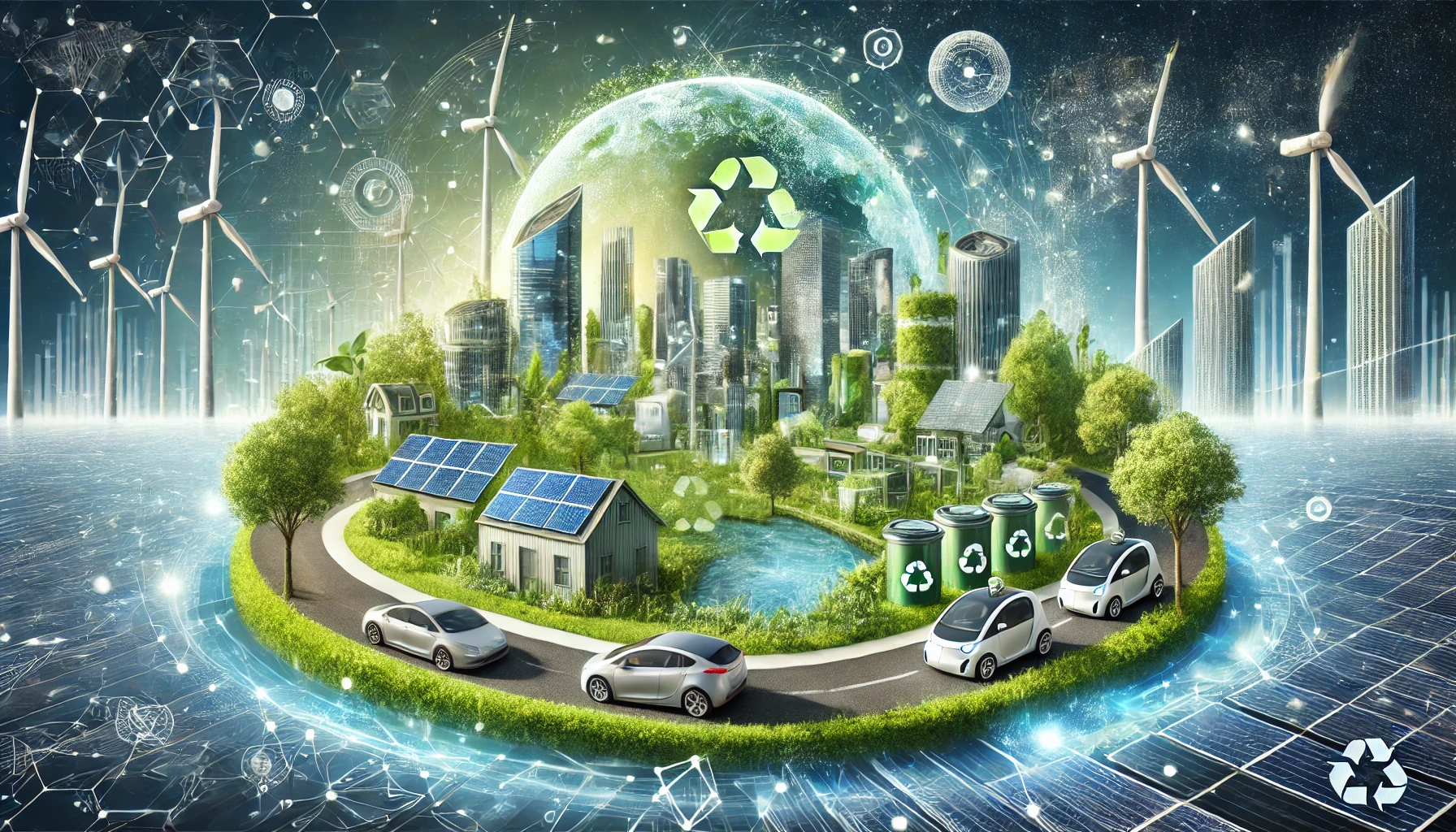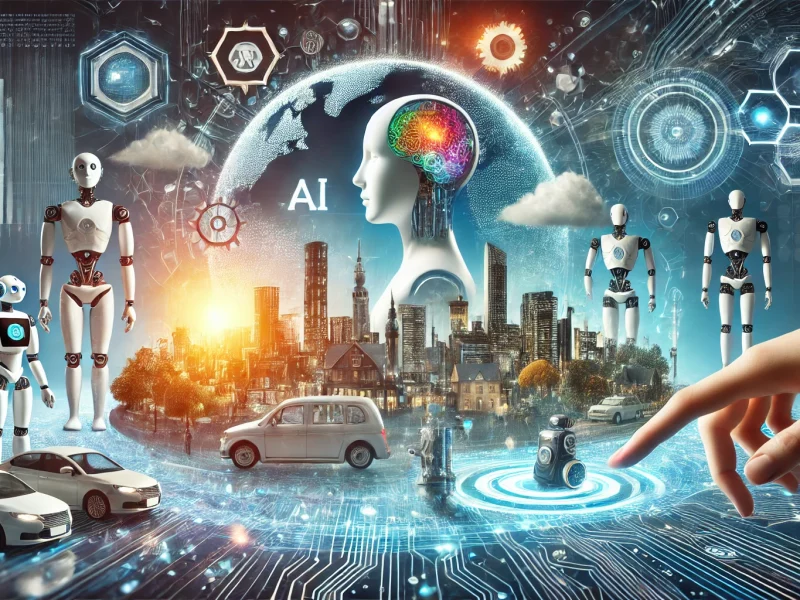As climate change and environmental concerns continue to rise, the world is turning to green technology innovations to build a more sustainable future. Green technology, also known as clean tech, focuses on minimizing environmental impact, reducing carbon emissions, and promoting renewable energy sources. These innovations are transforming industries, from energy and transportation to agriculture and construction.
In this article, we explore the latest advancements in green technology and how they contribute to a cleaner, more sustainable planet.
1. What Is Green Technology?
Green technology refers to scientific advancements and innovations that help protect the environment and promote sustainability. The main goals of green technology include:
- Reducing carbon footprints by using renewable energy sources.
- Minimizing waste and pollution through eco-friendly production methods.
- Enhancing energy efficiency in various industries.
- Developing sustainable materials that replace harmful alternatives.
As governments and industries shift towards net-zero emissions, green technology plays a crucial role in achieving sustainability.
2. Renewable Energy Innovations
2.1. Solar Power Advancements
Solar energy has been one of the most promising sources of renewable energy, and recent innovations are making it more efficient and affordable.
Breakthroughs in Solar Technology:
✅ Perovskite Solar Cells – These next-generation solar cells are cheaper and more efficient than traditional silicon-based cells.
✅ Floating Solar Farms – Large-scale solar panels placed on water bodies, maximizing space while reducing evaporation.
✅ Solar Windows – Transparent solar panels integrated into windows, converting sunlight into electricity without compromising natural light.
With these advancements, solar power is expected to become the leading renewable energy source in the next decade.
2.2. Wind Energy Innovations
Wind power is another major player in the green energy sector. New developments are making wind energy more efficient and accessible.
Recent Advancements in Wind Power:
✅ Floating Wind Turbines – Offshore wind farms that can operate in deep waters, expanding wind energy potential.
✅ Vertical-Axis Wind Turbines – Compact turbines that can be used in urban settings and on rooftops.
✅ Smart Wind Farms – AI-powered monitoring systems optimize wind turbine efficiency and predict maintenance needs.
By integrating these innovations, wind energy is becoming more reliable and cost-effective.
3. Green Technology in Transportation
The transportation industry is a major contributor to carbon emissions. However, new green technologies are helping to make travel cleaner and more sustainable.
3.1. Electric Vehicles (EVs) and Battery Technology
Electric vehicles (EVs) are revolutionizing the way we travel, with advancements making them more efficient and affordable.
Key Developments in EVs:
✅ Solid-State Batteries – Safer, longer-lasting batteries that charge faster and increase EV range.
✅ Wireless Charging Roads – Roads embedded with charging infrastructure that charge EVs while they drive.
✅ Hydrogen Fuel Cell Vehicles – Emission-free vehicles powered by hydrogen, offering an alternative to traditional EVs.
With more countries phasing out gasoline cars, EV adoption is expected to grow rapidly.
3.2. Sustainable Aviation and Green Fuel
The aviation industry is exploring eco-friendly alternatives to reduce its carbon footprint.
Green Innovations in Aviation:
✅ Electric and Hybrid Aircraft – Reducing emissions with battery-powered flight technology.
✅ Sustainable Aviation Fuel (SAF) – Biofuels made from algae, waste oils, and other renewable sources.
✅ Hydrogen-Powered Planes – Aircraft running on hydrogen fuel, emitting only water vapor.
These innovations aim to make air travel cleaner and more energy-efficient.
4. Eco-Friendly Construction and Smart Cities
The construction industry is embracing green technology to reduce environmental impact and promote sustainable living.
4.1. Green Building Materials
New materials are replacing traditional, high-carbon-footprint building materials.
Sustainable Materials in Construction:
✅ Self-Healing Concrete – Concrete that repairs cracks using bacteria, extending its lifespan.
✅ Cross-Laminated Timber (CLT) – A strong, eco-friendly alternative to steel and concrete.
✅ Recycled Plastic Bricks – Bricks made from waste plastic, reducing landfill waste.
Using these materials helps make buildings more energy-efficient and environmentally friendly.
4.2. Smart Cities and Energy Efficiency
Cities are adopting green technology to improve energy efficiency and reduce waste.
Key Smart City Innovations:
✅ Smart Grids – AI-powered energy distribution systems that optimize electricity use.
✅ Green Roofs and Vertical Gardens – Reducing heat and improving air quality in urban environments.
✅ IoT-Based Waste Management – Smart bins that optimize waste collection and recycling.
Smart cities integrate technology and sustainability, making urban living greener.
5. Sustainable Agriculture and Food Production
Green technology is also transforming agriculture by reducing resource consumption and increasing food production efficiency.
5.1. Vertical Farming and Hydroponics
✅ Vertical Farms – Multi-layered farms that use less land and water.
✅ Hydroponic Systems – Soil-free farming using nutrient-rich water.
✅ AI-Powered Precision Agriculture – Drones and sensors optimize irrigation and fertilizer use.
These methods produce more food with fewer resources, reducing the environmental impact of traditional farming.
5.2. Lab-Grown Meat and Plant-Based Alternatives
Food production contributes significantly to greenhouse gas emissions. Innovations in alternative proteins are reducing this impact.
Sustainable Food Innovations:
✅ Lab-Grown Meat – Real meat produced from animal cells, reducing the need for livestock farming.
✅ Plant-Based Proteins – Eco-friendly meat alternatives made from soy, peas, and other plant sources.
✅ 3D-Printed Food – Customizable, sustainable food production reducing waste.
These innovations provide sustainable solutions to feed a growing global population.
6. The Future of Green Technology
Green technology continues to evolve, with exciting possibilities for the future:
- Artificial Intelligence in Sustainability – AI-driven environmental monitoring and optimization.
- Carbon Capture and Storage (CCS) – Removing CO₂ from the atmosphere to combat climate change.
- Energy-Generating Roads – Roads that produce electricity from vehicle movement and sunlight.
- Ocean Cleanup Technologies – Robots and AI systems removing plastic waste from oceans.
As innovation accelerates, green technology will shape a cleaner, more sustainable future.
Conclusion
Green technology is at the forefront of global efforts to combat climate change and create a sustainable future. From renewable energy advancements and eco-friendly transportation to smart cities and sustainable agriculture, these innovations are reshaping industries and reducing environmental impact.
By adopting green technology and making sustainable choices, we can preserve the planet for future generations. The future is green—and it starts now! 🌱💡🌍


